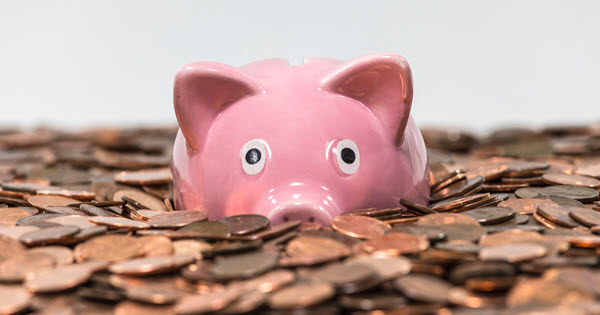Industry News, Featured
The US Penny is Retiring: Here's What Members Need to Know.

🪙Key Takeaways
- The U.S. Treasury is retiring the penny — production ends in early 2026 because it costs more to make each one than it’s worth
- Pennies remain legal tender, but they’ll become harder to find as supplies run out.
- You can continue to spend them, or deposit them at any branch.
- The Federal Reserve has stopped the distribution of penny rolls and boxes to consumers.
- As pennies gradually disappear from circulation, cash payments may be rounded to the nearest nickel, but card and digital payments will stay exactly the same.
- This change does not affect card or digital payments.
The penny has been part of daily life for more than 100 years, jingling in pockets, piggy banks, and cash registers across the country. But change is coming: the U.S. Treasury plans to stop producing pennies by early 2026 because each one costs approximately 3.7 cents to make.
While pennies will remain legal tender, their availability will gradually decline over the years. That means you may notice fewer pennies in your change jar or at the register, and small shifts in how cash transactions are handled—like rounding totals to the nearest nickel. Understanding these changes now can help you manage your money and plan for everyday purchases without surprises.
Why is the penny going away?
The main reason is cost. Each penny costs more than one cent to make — and with fewer people using cash for small purchases, the penny’s role in everyday commerce has faded.
The Treasury’s decision to retire the coin helps reduce waste, save taxpayer dollars, and simplify cash handling without affecting the value of your money.
FUN FACT: The first penny was issued in 1793
What members may notice.
As the supply of pennies declines, you may see a few changes:
- Some retailers may no longer provide pennies as change.
- As retailers find it harder to get pennies, cash totals could be rounded to the nearest five cents (for example, $10.02 → $10.00 or $10.03 → $10.05).
- Digital payments won’t be affected (credit, debit, mobile payments) — they’ll still process to the exact cent.
- St. Mary’s Bank will continue accepting pennies for deposits while they remain in circulation.
What St. Mary’s Bank is doing.
- We’ll continue to accept penny deposits from members and businesses.
- Business members with existing (historical) penny orders (rolls or boxed) will continue receiving them while supplies last.
- Due to Federal Reserve policies, St. Mary's Bank can no longer provide rolls or boxes of pennies to consumers.
What you can do.
- Deposit or spend your pennies soon.
- Use digital payments when convenient; they’re not affected by rounding.
- Be aware of rounding when paying with cash and plan for fewer pennies over time.
Common Member Questions
What should I do with the pennies I have?
- Use Them – Spend them in everyday cash transactions while they’re still common in circulation.
- Deposit Them – Bring them to your bank for deposit; they remain legal tender.
- Keep Them as Keepsakes – Some people may like to save a few as mementos, but don’t rely on them for future cash needs.
Will St. Mary’s Bank stop accepting pennies?
No. We’ll continue accepting pennies through our coin machines for deposit or exchange as long as we have the capability.
How will cash purchases work without pennies?
If pennies are not available, cash totals will be rounded to the nearest nickel:
$X.01–$X.02 → round down to $X.00
$X.03–$X.04 → round up to $X.05
$X.06–$X.07 → round down to $X.05
$X.08–$X.09 → round up to $X.10
Card and digital payments aren’t rounded — they’ll still charge the exact amount.
Why doesn’t the Treasury just keep making pennies?
Because they cost more to produce than they’re worth, and usage has dropped dramatically. Retiring the penny helps save taxpayer dollars and improves efficiency.
I’m a business member — can I still order penny rolls or boxes?
If you have existing orders through St. Mary’s Bank, we’ll fulfill them while supplies last. Once that supply is gone, new penny orders will no longer be available.
Will this affect my accounts or balances?
Not at all. The penny phase-out only affects physical coin circulation, not your account balances or transactions.
We’re here to help!
As the nation’s first credit union, St. Mary’s Bank has always stood with our members through change — large and small. If you have questions about the penny phase-out, rounding practices, or depositing coins, stop by your local branch or reach out to our member support team.
Together, we’ll make this transition simple and smooth.
Sources:
Congressional Research Service, Proposed Elimination of the Penny: Frequently Asked Questions – PDF
Federal Reserve Services, End of Penny FAQs
Congress.gov, Penny: History and Current Status

 Forgot
Forgot 


